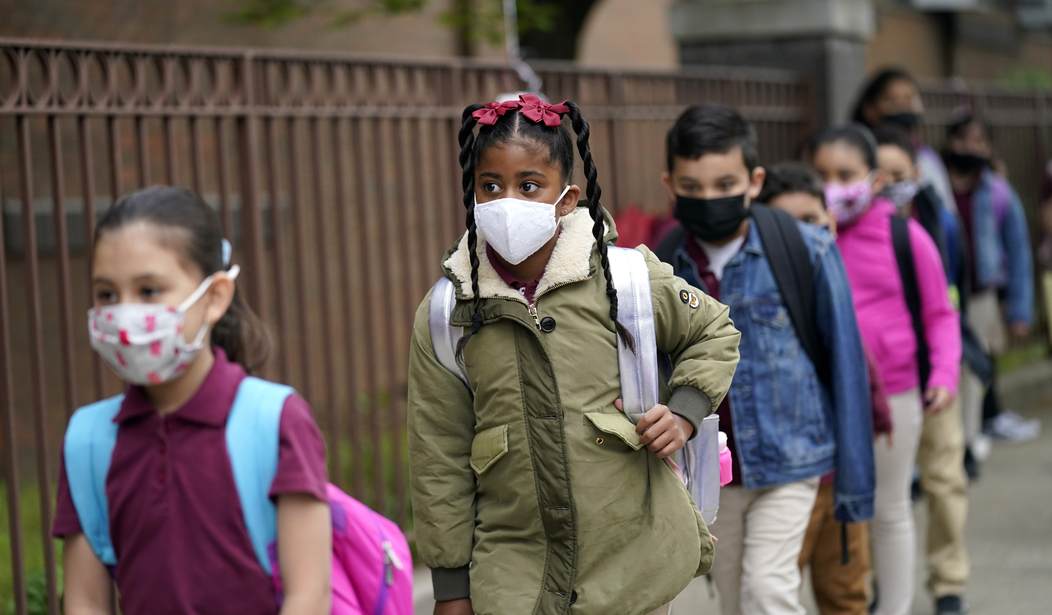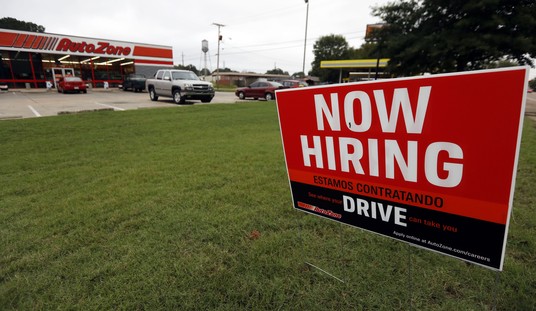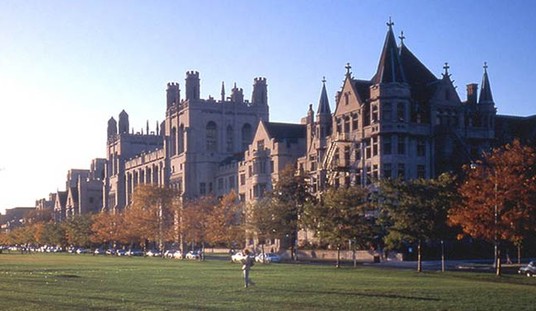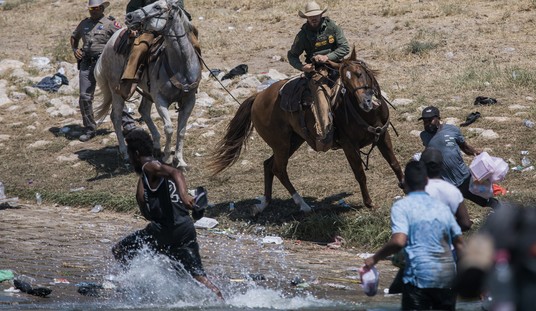Should we start with the good news or the bad? Normally I like to get the bad out of the way first, but the good news is good enough in this case that we should lead with it.
Scientists are still puzzling over whether the Delta variant is more dangerous to kids than previous strains were. Until Delta began its rampage this summer, the data was clear: Kids were at low risk of infection, especially in school, and at extremely low risk of serious illness from COVID. We could have and should have sent them back to class long ago. Masks should be optional at best.
The fact that Delta is wildly more contagious than earlier variants led to a reassessment of those assumptions. An unvaccinated adult who’s infected with the strain can produce a thousand times the amount of virus that an adult infected with the original strain of coronavirus last year produced. If kids are also producing a higher viral load then it’s conceivable that they’re more likely to get very sick when infected with Delta. And if more kids are suddenly getting very sick, we have a major problem. Sending them back to class could endanger their lives.
The good news comes from the UK:
7/ The graph below from @jneill shows that, like cases, #COVID19 hospitalization numbers also went up faster & higher with delta than alpha wave in England, although numbers remain low: maximum ~53 daily hospitalizations in a population of 12 million kids (= 4 per million kids)👇 pic.twitter.com/NcN5ZRCt3N
— Shamez Ladhani (@ShamezLadhani) August 9, 2021
8/ But when you look at *rates* (% of kids with #COVID19 who are hospitalised) the red line (if anything) is lower in the current Delta peak than previous Alpha peak, which means that kids exposed to the delta variant were less likely to be hospitalised than alpha wave @jneill 👇 pic.twitter.com/NCY2gWAYWS
— Shamez Ladhani (@ShamezLadhani) August 9, 2021
The red line is the key. Kids in the UK weren’t hospitalized at a higher rate after Delta arrived than they were before. That means the risk of serious illness to the average child hasn’t gone up. We can send them back to class safely after all!
It’s just that … we might not be able to send them back to class for long. Which brings us to the bad news.
The yellow line in the graphs above shows that many more kids in Britain landed in the hospital from Delta than from previous strains. That’s not because Delta is making them sicker, it seems. It’s a simple function of math: If, say, one in a thousand children with COVID ends up needing hospital care, and if Delta infects 10 times as many children as previous strains did due to its freakish contagiousness, then 10 times as many kids are going to need hospital care going forward even though the variant isn’t making kids sicker on average. And because Delta spreads like wildfire, many of those kids are going to need that care *at the same time*.
Which creates problems. Watch this:
Inviting the “Covid is safer for kids than the vaccine” crew to tell me what you think the infection hospitalization rate is.
That is, what % of Peds SARS-CoV-2 infections require hospitalization?
Please put your answer here or in comment section here: https://t.co/Rp4AbRDr01 pic.twitter.com/aW121AqfI6
— Jeremy Faust MD MS (ER physician) (@jeremyfaust) August 16, 2021
There’s a little good news buried within the bad news here. Faust notes in a post about the trend that even when kids end up on a ventilator due to COVID, they have much higher survival rates than adults in that situation do. Practically all children with a severe case can be saved — if, if, if they can get the care they need. But can they? “Given that pediatric intensive care units in some parts of the country are now completely full, taking measures to slow the virus down in these areas must be a top priority so that children do not die due to a lack of life-saving resources that are usually available in this country for any child in need,” Faust writes, noting that Delta has “sharpened” the curve. To make sure America’s unvaccinated under-12 population can get ER care as needed, we need to flatten it for them.
Er, how?
Data from last year suggests that kids are at least as safe from infection while in school as they are outside of it, since infection rates among students tend to be lower than that of the surrounding community. But that doesn’t mean that infection, particularly in the era of Delta, will be rare. The first week of school in some counties points to a sh*tshow to come:
Burke County, Georgia, announced Friday that schools would be canceled for two weeks after more than 40 new cases were recorded among students in the district.
Ware County, Georgia, said it would cancel classes for two weeks “due to a sharp increase in the number of active positive COVID cases reported among students and staff members” after just over a week in session.
Schools in Georgia’s Macon, Taliaferro, Glascock and Talbot counties shut down for two weeks or transitioned to virtual learning.
Stone High School in Wiggins, Mississippi, said this week it would transition to virtual classes for two weeks because of new virus cases, though the school did not disclose the exten of the outbreak, according to WLOX, an ABC/CBS-affiliated television station.
That list isn’t exhaustive:
BREAKING: After one week, Pearl River Central High School has quarantined 40% of its entire student body.
When classes began, the school board made masks optional for a more "normal" school year.
Now, the entire school district is going virtual.https://t.co/zoVDEWxfNw
— Ashton Pittman (@ashtonpittman) August 12, 2021
JUST IN: Hillsborough County Public School Board will hold an emergency meeting Wednesday after 5,599 students and 316 staff have entered quarantine for COVID. The Tampa-area district, seventh largest in the U.S., has only been in school four days.
— Travis Akers (@travisakers) August 16, 2021
SUSD Superintendent:
— 632 students in quarantine after a week
— More evidence of transmission than ALL of last year
–COVID Spread threatens to end in-person learning pic.twitter.com/SupTRwYgrD— Steve Irvin (@Steve_Irvin) August 13, 2021
What policy should a school follow with respect to in-person learning for a hyper-contagious but rarely severe respiratory disease? Kids who are infected and symptomatic obviously need to be sent home. Presumably kids who are asymptomatic but who test positive need to go home as well. But should schools stop asking children who were exposed to infected classmates to quarantine in the interest of keeping as many children in class as possible? Given how infectious Delta is, if dozens of kids have to isolate for two weeks every time someone in the room is infected, they’ll be out of class half the year, if not more.
But if you don’t send them home to quarantine and one child ends up becoming the one in a thousand who gets very sick after he’s infected, you’ll have a lot of explaining to do to his or her parents. And possibly some major liability issues for the school district.
Here’s Scott Gottlieb discussing the possibility of the FDA accelerating approval of vaccinations for kids if the early infection data from schools looks discouraging. I’d love to have him or anyone else explain why it wasn’t accelerated already, in advance of the school year knowing that a contagious new variant was possible.
"My belief is that if we start seeing a bad situation with respect to children as they go back to school, the FDA will be in a position to make an earlier authorization … if they feel they have to," says @ScottGottliebMD on the possible timeline for children vaccinations. pic.twitter.com/0jbmmunY43
— Squawk Box (@SquawkCNBC) August 16, 2021







Join the conversation as a VIP Member